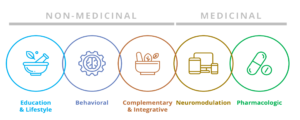Carl Cincinnato
Each year, millions of people with migraine visit a hospital Emergency Room (ER) with severe and debilitating migraine attacks. Many of us have shared how such visits have made us feel like drug seekers. We have been humiliated by staff who have belittled our pain or treated us with suspicion. Why does this occur? And how can we receive better treatment for our severe migraine attacks?
Christopher H. Gottschalk, MD, FAHS, is the chief of the Yale School of Medicine Division of General Neurology, as well as an Assistant Professor of Neurology. Dr. Gottschalk established the first headache medicine program at Yale, the Yale Headache and Facial Pain Center, where he continues to treat patients with chronic headache and facial pain. In addition to his clinical work at Yale, Dr. Gottschalk is researching ways to optimize interventions to improve headache diagnosis and management across medical specialties.
Should the ER, or the emergency room, be something that patients use frequently to treat migraine?
Dr. Gottschalk: “I would say no. I would not want a patient to require emergency services often. That says something about whether or not their preventive therapy is working or adequate; whether they have a good plan of attack for their own treatment at home. But, ideally, it should be a very rare event that a patient would require that kind of intervention. And then the problem becomes, if somebody is presenting frequently to an ER because their treatment isn’t working, that patient is going to be perceived as a drug seeker by that location.
Increasingly, one of the measures of how well an emergency room is functioning is how much recidivism there is, so if people show up within a few days of an ER visit, or multiple times in a month, that’s considered a failure of something. That’s saying the care is not correct. But in the case of headache pain, a repeat visit is often perceived as a problem patient rather than problem treatment.”
The ER isn’t a particularly friendly place for someone with migraine, not just because of the potential lack of education or knowledge of the staff, but also because of the environment itself: the bright lights, being surrounded by sick people, or urgently injured people. Can you talk about some of those factors?
Dr. Gottschalk: “It’s probably the worst possible place for somebody who is in severe pain and acutely sensitized to pretty much all of their sensory realms: the lights, noise, sounds, odors, whatever. And the fact that your typical presentation to the ER means a wait time, and if you aren’t suffering from chest pain or trauma, then you’re immediately put on the end of that list. So you could be sitting for hours just waiting to be put in a loud, bright room and made to wait for more time. That’s just terrible. Whereas, what a headache infusion program will do in most centers is design the space specifically for all those things — quiet, pleasant, gentle lighting — and then get people in and out efficiently and fast, so that things go better.”
If someone finds themselves in an ER, how can they communicate effectively to those around them to get better results?
Dr. Gottschalk: “Some of the suggestions that I would have are to make it clear that this is not simply about pain. I think too often that the ER is pressed to move as quickly as possible, identify the target symptom or problem, deal with it, and get people out. So if they perceive somebody as simply wanting pain care, they will focus on standard pain therapy. Remind people that this is a complex combination of symptoms and that one of those is pain, but you’re really looking to stop feeling so nauseated, to stop feeling so sensitive to your environment, to be able to function normally. Remind them that the goal of this is not just pain relief, but the need to get back to your family, the need to get back to work, etc. Part of conveying that message, then, is to make it clear to people that you’re not there because you want the treatment; you’re there because you want to get back to your normal life.”
Watch the full interview to find out:
- How often should an ER be used for migraine?
- Why are headache patients sometimes treated as drug seekers in an ER?
- What steps can headache patients take to get better treatment in an ER?
- What steps can headache patients take to reduce the likelihood of going to an ER?
- What alternatives do headache patients have if they don’t want to go to an ER?
- When is the best time during a migraine attack to take a triptan?
- What is a status migraine and how do you treat it?
- What is an infusion center?
- When should you go immediately to an ER?
- What are the differences between typical migraine aura symptoms and stroke symptoms?
Watch Dr. Christopher Gottschalk’s interview preview here or order it as part of the Migraine World Summit package from this page.
If you previously purchased the 2019 Migraine World Summit, you are all set to login to watch the full interview.
Posted in: Migraine Education





